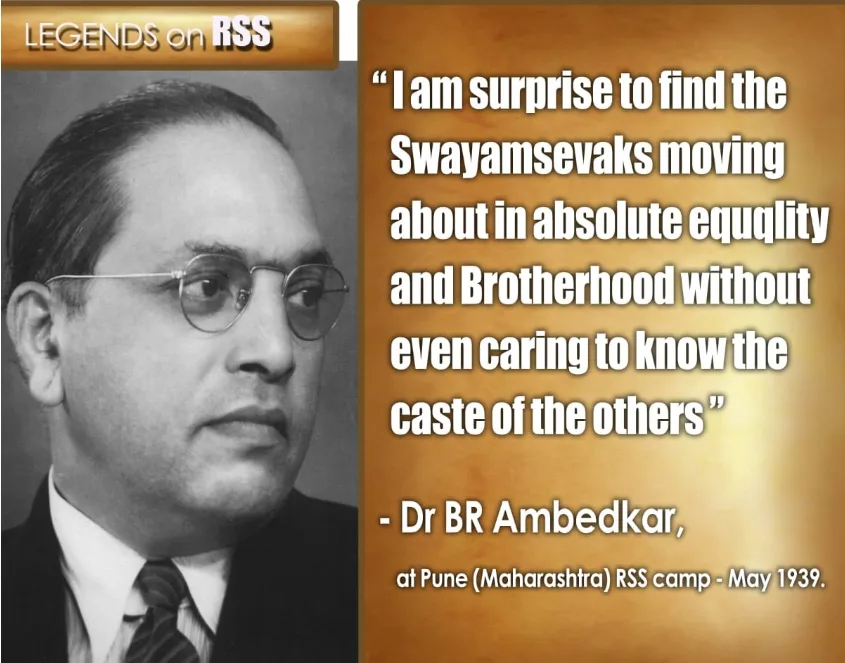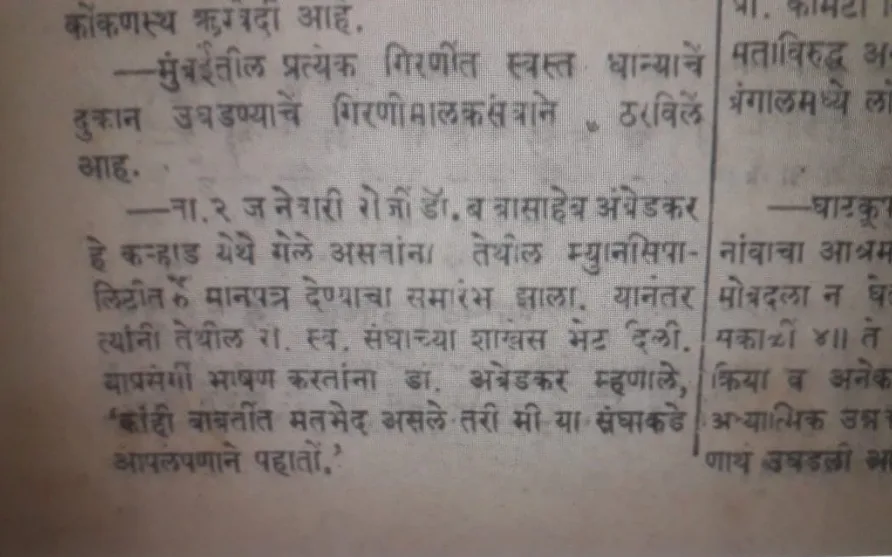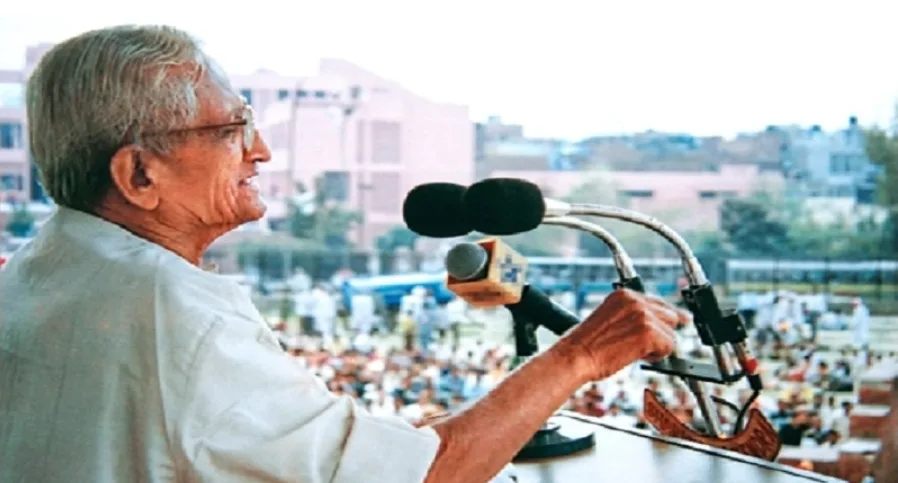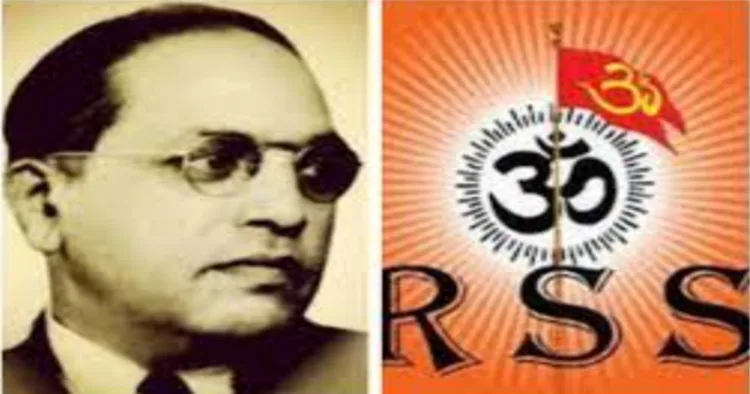Dr Ambedkar: I look at Sangh with affection, Visited Karad Shakha of Sangh in 1940
Rashtriya Swayamsevak Sangh has entered its centenary year this year. Next year, Vijayadashami will mark 100 years of Sangh. Sangh has faced many challenges in the course of this journey. The Sangh has been banned three times for various reasons, but has emerged unscathed. The allegations of Sangh having no place for untouchables, that it is only for Brahmins, have also been dropped today.
Gandhiji visited the Sangh camp in Wardha in 1934. He realised that swayamsevaks were of different castes and religions. He experienced firsthand that none of the swayamsevaks was interested in knowing their own caste or that of others. They lived and ate together, it was very natural. Gandhiji was extremely surprised to see this. Sarsanghchalak Dr Hedgewar said, ‘The untouchability eradication programme is not implemented here. We tell everyone that we are Hindus only. Due to this feeling of unity, there is no sense of casteism in the Sangh. The only thing that remains in their minds is that we are Hindus.’
There were also allegations that RSS did not respect the tricolour as much as the bhagwa dhwaj. But the RSS has been cleared of those allegations too. It was also denied that RSS swayamsevaks participated in the freedom struggle. But when the news was shown that the founder of RSS, Dr Hedgewar, was an active member of the Indian National Congress and participated in the freedom struggle through the Jungle Satyagraha during his tenure, only then did people and the opposition believed it. Similarly, RSS was also accused of being anti-Dalit and various misconceptions were spread about Dr. Babasaheb Ambedkar and the RSS. But now a document about Dr. Ambedkar and the RSS has emerged, which has shed more light on the relationship between the two.

Bharat Ratna Dr. Babasaheb Ambedkar has once again become the topic of discussion with a strong evidence that he had visited a shakha of the Rashtriya Swayamsevak Sangh. According to this document, on January 2, 1940, Dr. Babasaheb Ambedkar had gone to Karad (Satara district). There he visited the Sangh Shakha and gave a speech in front of the Sangh swayamsevaks too. In this speech, he said, “Even though there are differences in some matters, I look at Sangh with affection,” the news about this visit was published in the Kesari newspaper published from Pune on January 9, 1940.

Along with personality development, Sangh has been working for the past 99 years to create a Hindu organisation free from caste discrimination and inequality. Since its inception, Sangh has been working with utmost sincerity to break down the barriers of caste and unite the society. The affection that Dr. Ambedkar has expressed towards the Sangh is a testament to this sincere work.
The book ‘Dr. Ambedkar and the Journey of Social Revolution’ written by Dattopant Thengadi also sheds light on the relationship between the Sangh and Dr. Ambedkar. In the beginning of the eighth chapter, Dattopant says, ‘Dr. Ambedkar was fully aware of Sangh. The Sangh volunteers were in constant contact with him. He used to discuss with the volunteers. He was also informed that the Sangh is an all-India organisation of Hindus. He knew it was different than other Hindu-oriented parties or organisations. He only had a doubt in his mind about the pace of Sangh’s growth.’ From this point of view, Dr. Ambedkar and Sangh need to be analysed.

In the same case, Dattopant Thengadi says, Dr. Hedgewar showed everyone the model of a socially egalitarian society without caste discrimination. He affirmatively said that on the basis of psychology, social equality can be created by a system not yet adopted by anyone. Like Dr. Hedgewar, Babasaheb also believed that social equality cannot be established without creating social harmony. These examples should illuminate the link between the Sangh and Babasaheb Ambedkar.



















Comments